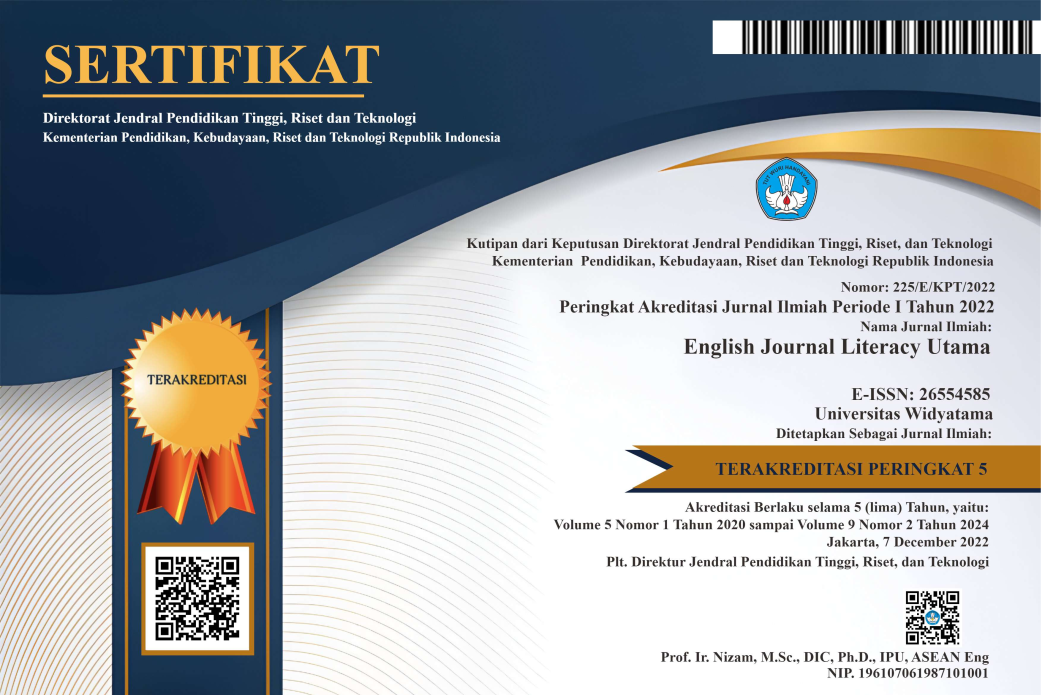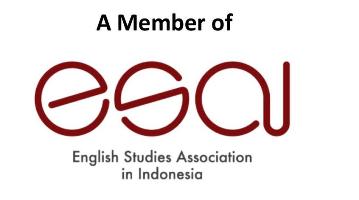THE IDENTIFICATION OF MORPHOGRAPHEMIC CHANGES IN INDONESIAN WRITING RESULTS OF DYSGRAPHIC STUDENTS AT YAYASAN PANTARA JAKARTA AS A SECOND LANGUAGE ACQUISITION
DOI:
https://doi.org/10.33197/ejlutama.v6i1.156Kata Kunci:
dysgraphic students, Indonesian writing results, morphographemic changes, second language acquisitionAbstrak
The importance of acquiring Indonesian language as a second language underlies the research towards the Indonesian writing results of dysgraphic students at Yayasan Pantara Jakarta. It is very important for Indonesians to acquire Indonesian language because Indonesian language is used as the first language for some city dwellers and a second language for most Indonesians. The main purpose of the research is to identify the morphographemic changes that occur in dysgraphic Indonesian writing results as the second language acquisition at Yayasan Pantara Jakarta. The research used descriptive-qualitative method. The data was taken at Yayasan Pantara Jakarta Elementary School after being conducted direct field survey toward dysgraphic students. The writing analysed based on online KBBI (Indonesian Dictionary) and some theories related to the research. We used the primary theories from Bussmann (1996), Šev?íková (2018), and BOTH (2016). This research also supported by other supporting theories, such as Kidd et al. (2018), Bitchener & Ferris (2012), Sousa (2016), etc. From the analysis of the Indonesian writing results of dysgraphis students at Yayasan Pantara Jakarta, we found some types of morphographemic changes, they are prothesis, epenthesis, paragoge, syncope, apocope, metathesis, and substitution. Prothesis, epenthesis, and paragoge are parts of addition or insertion, while syncope and apocope are parts of deletion.















